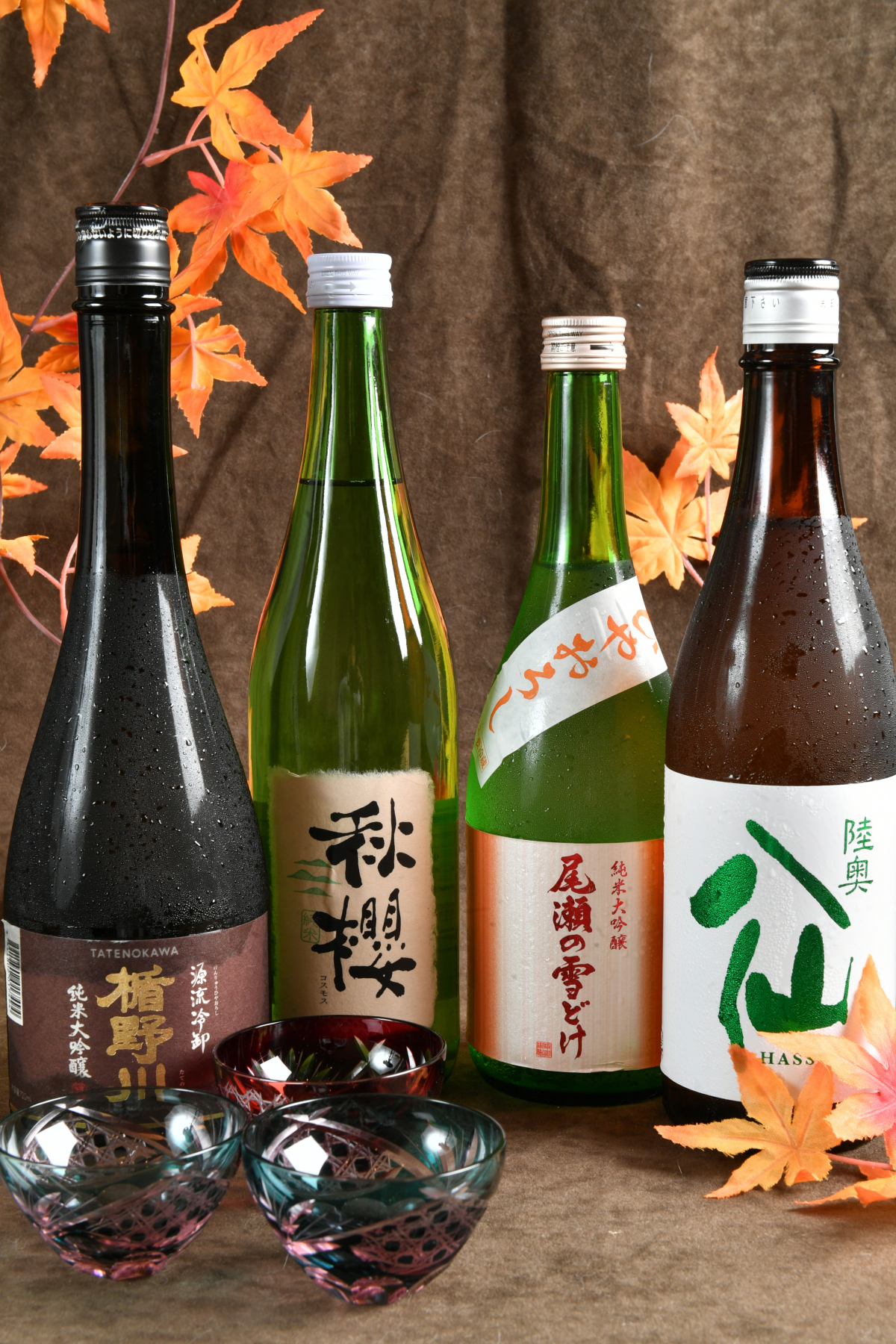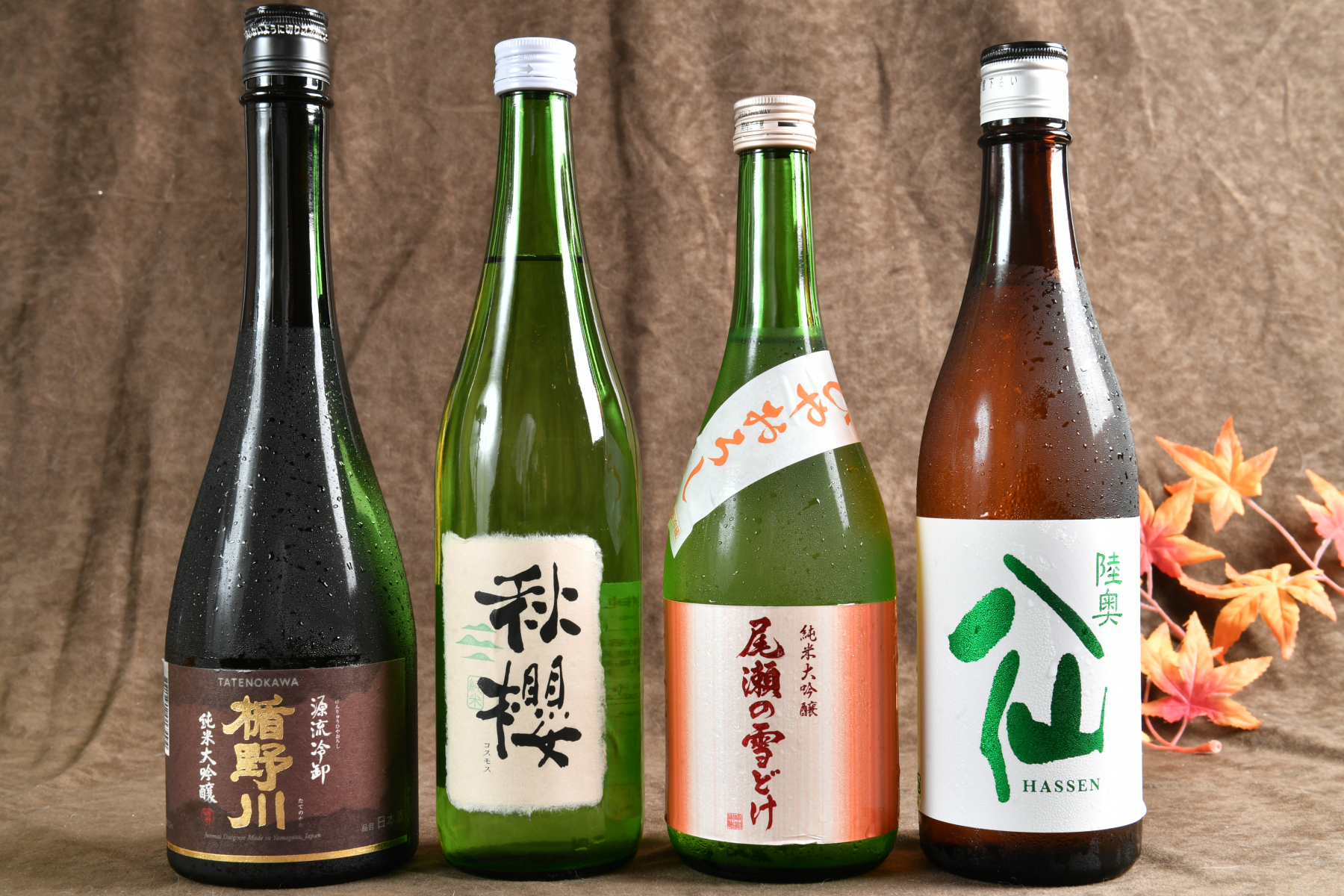What are "hiyaoroshi" and "akiagari"?
These sake products are representative of the autumn season in the world of Japanese sake. All of them are made from new sake brewed in winter and spring, and then left to mature slowly in the brewery during the summer before being shipped in the fall, so that the matured flavor and mildness can be enjoyed.


hiyaoshiSake made from new sake brewed in the winter is heat-sterilized in early spring, stored at low temperatures for one summer, and bottled without heat-sterilization for shipment in early fall. The roughness of the sake has been reduced by passing through the summer, giving it a softness and depth of flavor. Hiyaoroshi can be enjoyed cold or warmed, but it has a fuller, richer flavor when it is heated to room temperature or lukewarm.
On the other hand,the start of autumnis a term named after "the taste improves over the summer," and similarly refers to sake that has undergone summer maturation, but often refers to a type that emphasizes a deeper sense of maturity and thicker umami flavor. Although the definition of "hiyaoroshi" varies somewhat from brewery to brewery, it is characterized by a more subdued flavor and richness than hiyaoroshi, and has an appealing taste that goes well with autumnal flavors.
Tatenogawa Junmai Daiginjo Genryu Cold Wholesale
This is a limited quantity of Tatenogawa hiyaoroshi (hiyaoroshi) shipped every fall. 2024 Genryu hiyaoroshi has a soft and beautiful fullness. It has a firm umami flavor, yet is a crisp, refreshing mid-meal sake.
Tomikyucho Akisakura (Cosmos) Junmai Hiyahi Oroshi
Each bottle of directly brewed sake is carefully bottle-fired, bottle-stored, and allowed to sit for one summer. While respecting the soft umami of soft-water brewing, it has a dry, refreshing finish that expresses the hiyaoroshi style of Tomikucho.
Mutsu Hachisen Green Label Special Junmai
It is fired once and then left in the cellar for the summer, allowing it to age well over time. The roughness of the freshly squeezed wine has been removed, and this bottle has a rounded appearance.
Oze no Yukidoke Junmai Daiginjo Hiyoroshi
The nose has an apple-like aroma, and when it is in the mouth, pear-like fruit aroma spreads along with the umami of rice, with a slight astringency reminiscent of the rind that accentuates the honey-like sweetness. The lingering finish is long and clean, creating a lasting impression like an autumn evening.
*Please note that we may not be able to provide this service depending on the availability.
Seasonal Sake Enjoyment
The best way to enjoy it is to pair it with seasonal ingredients. It is a perfect match for aromatic dishes such as matsutake mushrooms, autumn swordfish and returning bonito, simmered dishes with mushrooms and root vegetables, and fatty fish. Hiyayoroshi, with its balance of lightness and umami, is best served with appetizers and sashimi, while Akagari enhances the flavor of rich meat dishes and stewed dishes.
Tasted in the midst of the changing season, hiyaoroshi and akiagari sake are not just for drinking, but also remind us of the autumn harvest and the changing climate. Comparing the two and enjoying the differences in character is a luxury that only autumn can offer.
![Tsukiji Jisaku [Official] Ryotei Famous Mizutaki -Official direct reservation special offer-.](https://jisaku.co.jp/wp-content/uploads/2025/01/header-logo.png)
